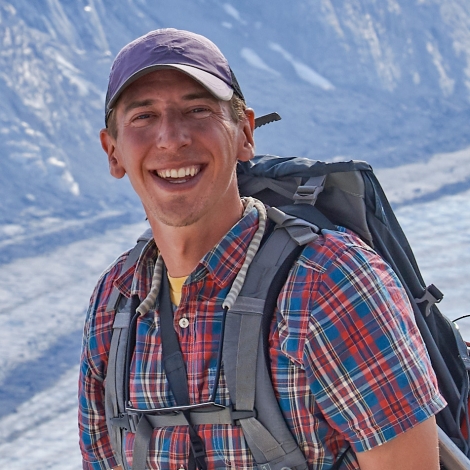Dr Armstrong joined the Department in Fall 2017 after completing his PhD at the University of Colorado at Boulder. Dr Armstrong is broadly interested in investigating earth surface dynamics, including the behavior of glaciers and rivers, using satellite remote sensing, field study, and numerical modeling. Dr Armstrong's recent work has focused on the process of sliding at the bottom of glaciers, its sensitivity to meltwater production, and how it changes over daily to multi-decadal time scales. Glacier basal motion is an important process to study because it dominates the motion of many glaciers, will influence how glaciers change in a warming world, and is the means by which the shape our spectacular alpine landscapes. His work also focuses on impacts of glacier change on downstream environments, with a particular focus on the formation and growth of ice-marginal lakes. Dr Armstrong's research and teaching support the Department's Quantitive Geoscience, Environmental Geology, and Earth System Science tracks.
Education
- B.S. Boston College
- Ph.D. University of Colorado at Boulder
Courses Taught
- GES 1101 - Introduction to Physical Geology (labs)
- GES 1102 - Introduction to Historical Geology (labs)
- GES 1104 - Water: Mountains to Sea (labs)
- GES 2750 - Preparation for Careers in the Earth and Environmental Sciences
- GES 2752 - Environmental Science Field Methods
- GES 3140 - Quantifying Environmental Change
- GES 3530 - Mechanics of Earth Systems
- GES 4210 - Senior Seminar (Geology Capstone)
- GES 4705 - Engineering Geology
Website and CV
Recent Publications
View Dr. Armstrong's profile on Google Scholar. Asterisks (*) indicate student advisees.
- Vowels, L.*, W.H. Armstrong, I. Overeem, D. McGrath, B. Rick. A. Dye, and D. Martin, 2025. Investigating changes in proglacial stream suspended sediment concentration and their drivers using large scale remote sensing. Geomorphology 475:109664. https://doi.org/10.1016/j.geomorph.2025.109664
- Polashenski, D.*, M. Truffer, and W.H. Armstrong, 2024. Reduced basal motion responsible for 50 years of declining ice velocities on Athabasca Glacier. Journal of Glaciology 70:e26. https://doi.org/10.1017/jog.2024.51
- Rick, B., D. McGrath, S.W. McCoy, and W.H. Armstrong, 2023. Unchanged frequency and decreasing magnitude of outbursts from ice-dammed lakes in Alaska. Nature Communications 14, 6138, https://doi.org/10.1038/s41467-023-41794-6
- Armstrong, W.H., Polashenski, D.*, Truffer, M., Horne, G., Hanson, J.B., Hawley, R.L., Hengst, A.M.*, Vowels, L.*, Menounos, B., and Van Wychen, W. (2022). Declining basal motion dominates the long-term slowing of Athabasca Glacier, Canada. Journal of Geophysical Research: Earth Surface, 127, e2021JF006439, https://doi.org/10.1029/2021JF006439
- Rick, B., McGrath, D., Armstrong, W.H., and McCoy, S.W. (2022). Dam type and lake location characterize ice-marginal lake area change in Alaska and NW Canada between 1984 and 2019. The Cryosphere. 16, 297–314, https://doi.org/10.5194/tc-16-297-2022
- Anderson, L. S., Armstrong, W. H., Anderson, R. S., and Buri, P (2021). Debris cover and the thinning of Kennicott Glacier, Alaska: in situ measurements, automated ice cliff delineation and distributed melt estimates, The Cryosphere, 15, 265–282, https://doi.org/10.5194/tc-15-265-2021

Title: Associate Professor: Glaciology, (he/him/his)
Department: Department of Geological and Environmental Sciences
Email address: Email me
Phone: (828) 262-6739